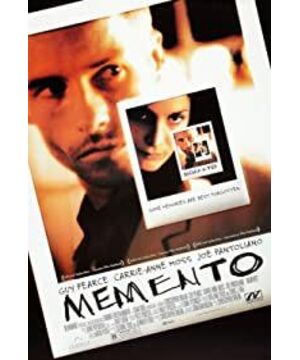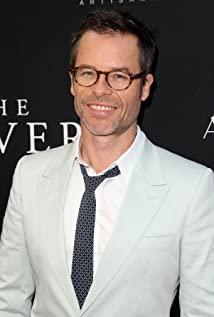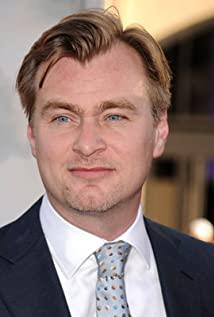Modernity and the Will of Director
Black and white and color are one of the binary oppositions under the existing knowledge type. "Shards of Memory" developed based on the basic visual undertones uses two parallel linear narratives that finally intersect. The black and white line is the positive narrative, and the color The line is a flashback. Both direct narrative and flashback are linear time narratives. Linear narrative corresponds to time linearity. It is one of the irreversible rules of film language. It is because of its irreversibility that reality is produced.
For the whole story of "Memory Fragment", we start from the lowest level of realism. The beginning of the colorful flashback line is that our classmate Xiao Gai gets revenge. This fact is used as the starting point of the story. The language is based on the first person subjective perspective of classmate Xiao Gai. The focus begins, which embodies the subjective stream of consciousness narrative meaning. Immediately after the narrative turned into a black and white narrative line, the language also started with a close-up focusing on Xiao Gai. Together with Xiao Gai's voice-over self-narration, it was also the beginning of a clear subjective stream of consciousness. In this way, assuming that the black and white line is the present ongoing tense, the timeline from now to the future cannot be unfolded by subjective stream of consciousness because of the linear reality, and can only be described "objectively", because the future is not related to the color flashback. Before the lines intersect, it is unknowable and unknowable. There is no time and space support to unfold memories. In principle, it is impossible to use subjective stream of consciousness to narrate, but the story of black and white line still uses subjective stream of consciousness to expand. In other words, both narratives have the possible meaning of unreliable narratives. From this we can ascertain the hard fact that the time and space where the narrator is located is actually the time and space after the revenge of the narrator, that is, after the definite ending of the small cover of the colorful flashback line, the plot has this Only with a solid backtracking foundation can the backtracking be carried out. So the structure is actually a nested structure from {retribution to the great grudges to the present} and {from the beginning of amnesia to the present (including retribution to the grievances in the middle)}. In the current comprehensive understanding of image history, black and white is caused by the immaturity of early optical imaging technology, symbolizing the past. Compared with the gradually developed optical imaging technology later, color images also symbolize the present, two linear narrative lines The color line symbolizing the present is a flashback (returning now) and the black-and-white line symbolizing the past is a rebuttal (the past to the present). There are two contradictory split attitudes. However, the nesting structure determines the two passages of the past. Time cannot be intertwined. Correspondingly, our hypothesis on the narrative line or the flashback line has a taste of truth and hypothesis . The possibility that both narratives may be unreliable narratives is very likely. The subjective stream of consciousness narrative of the thread and the natural objectivity of the double thread will split. The nested structure determines that once the content is intertwined, the subject and the certainty of time on which the retrospect depends are in danger of collapsing, so the overall must The substantive split between unity and whole produces the attributes of absolute unity and absolute difference that cannot be merged as a whole .
The existence of this absolute unity and absolute difference, throughout history, fits Descartes’s-mind-object dualism-prototype, that is, there are two entities in the world. The other is the "spirit/substance" that can only think and not have extensiveness. The two are completely different in nature. They exist and develop independently, but they exist in one body (person) at the same time.
"I think therefore I am, I am therefore I think" ({First Meditation}), as the expression of his philosophy, is rooted in the foundation of universal suspicion:
1. I can doubt everything, but I cannot doubt "I am doubting" itself;
2. "Being in doubt" means "thinking", and thinking activities need a subject (I) to undertake;
3. From this, we can know "I exist" from "I am doubting/thinking".
In the form of derivation, this embodies the rigor (mechanical) of the “irrefutable” of deductive reasoning. The dialectical opposite relationship between me and thinking seems to embody the two levels of dualism, but in fact, all the points of this judgment fall on me. "Thinking" means rationality. The meaning of my "being" is to affirm the fact that "I am doubting". The "being" here is always "thinking." In thinking, the real dialectical opposition is intellectualism and empiricism, just like the tattoo information that needs to be distinguished and analyzed by Xiao Gai in the movie and the remaining short-term memory that can only last for a period of time. The "being" rule Sex is strictly limited by reason. The above deductive syllogism can transfer the “truth” of the whole discovered by the so-called intuition to the conclusion, and the “thinking” of doubt itself isolates the completeness of “thinking” that is not questioned from perceptual activities. Sex, the completeness of reason, and the full legitimacy of "I think, therefore I am" comes from this. But the shortcomings of Descartes’ thinking are quite obvious. Under the completeness of reason, people don’t have any freedom, because as long as there is freedom or as long as the freedom of "thinking", there must be a part of questioning "thinking", which is the same as "thinking". The unquestioned completeness ideal is fundamentally contradictory.
Going back to the movie in this way, the pros and cons of the narrative are mechanical facts, and the pursuit of the truth is the purpose of the narrative, and the respective attributes can be extracted in the large nested structure. Both of these are the composition of the monolithic whole of the story. We can freely assume that any one thread is given absolute truth. At the same time, the other thread will completely fall into an unreliable narrative and lose its existence and form a mutually exclusive paradox. Therefore, The "examination" of the two lines from different angles of the story gives the overall nested structure a polyphony. The same conclusion can be drawn from the respective structures of the double lines, subdivided into the linear-mysterious structure adopted by the black and white line, and the story of Sami amnesia is described step by step to reveal the history and future of the self. The color flashback line uses It is a linear-irony structure, slowly revealing new discoveries to gain the meaning and value of self-revealing. This same combination forms a polyphony under the nested large structure.
In the two-line story, Sami is not a liar, but he has no response to the conditioned reflex that should be trained in memory. His wife relies on empiricism and believes that Sami is still the original husband who loves her, because Memory is not all constructed by conditioned reflex, and the composition of life cannot be left with conditioned reflex. Xiao Gai relies on intellectualism and thinks that he is a liar trying to defraud insurance, because conditioned reflex should not be controlled by reason. It formed a memory spontaneously, and Sammy did not accumulate it, obviously because he did not have brain damage and did it deliberately.
On the color flashbacks, Xiao Gai’s non-stop voice-over is the most prominent audio-visual motif. This externalized motif has two types of attributes in principle. It is a discourse with the meaning of comment and scrutiny. Its ambiguous time and space must be located outside the current ongoing time of the plot. In this paragraph, the voice-over is generally the first type. The paradox that follows is that the audience is the one who knows everything. And the so-called "God" who knows the final result cannot give Xiao Gai the ability to know everything. The premise for us to know everything becomes Occam's Razor, which truly eliminates the perspective of God. Then the story world is actually opaque to us. , It also makes the real "God" in the movie hidden from the author Nolan.
Through the magnification of the nested structure, especially the magnification of the proof and reflection on the existence of human beings, the various references contained in the double line have gradually spread throughout the film, which indirectly points to and magnifies an important part of the plot. The hanging question of: Xiao Gai’s last memory is the death of his wife, so how can he still remember that he has short-term amnesia? This indirectly points to where McGeffen is, that is, why Xiao Gai started the action, what is the turning point of this fuze in the middle, and how does it affect the ending and other questions that need to be resolved. The answer to this question was verified by the story of Sami in the black and white line in the film. For Xiao Gai, his wife was killed. It is a fact under empiricism to avenge his loved ones, but the memory stops under intellectualism. At the final point of his wife’s death, Xiao Gai would not remember that he had short-term amnesia and would reciprocate and forget revenge. The crux of the problem is that the memory of reciprocation is constantly cut off by short-term amnesia, which is nothing more than a kind of Memory determines the static conclusion of human existence in the past, while Xiao Gai’s current actions are undoubtedly the dynamic conclusions that determine future existence. Then the most authentic McGeffen is both memory and action that together constitute evidence of human existence. The difference between the two Combined with the rebate to the title of "Memento" (memory fragments). The word Memento literally means souvenir in English. Of course, what it refers to in the movie is one of the most important props-photos. As far as the verification of existence is concerned, what now occupies the world is the eternal existence. The past and the future want to enter. This requires changes from the present to the virtual before it is possible to introduce the past and the future to express in the present Dasein. On the other hand, the pictures representing the past and the future appear mostly in the color flashbacks in the movie. At the end of the black and white flashbacks, their way into the present happens to be the two-line subjective stream of consciousness narrative manipulated by the hidden author Nolan, and The two-line unreliable narrative discussed above that can be vaguely guided can best highlight Nolan's narrative intentions. And through the co-existence of some spaces in the photos that are different from the current time and space and some of the same space as the current time and space, hotels, bars, restaurants, suburbs and even memories of the middle and small buildings in the entire movie are closely spaced. Combined with a maze-like space, Xiao Gai looks for himself and the meaning of existence. As the existence directly informed by Nolan, the audience looks down on Xiao Gai’s struggle against the trapped beasts. At the same time, the sadness comes from it. There will be inspired by empathy, just like people with bounded rationality, don't blame yourself for nothing, portray a positive life, and at the same time, it is also a reflection of the transcendental structure of the film.
The magnifying effect of this nested structure and the transcendence under the co-reflect of the forward-looking is reflected in the interlacing of the black and white lines, which are all indoor dramas trapped in the house, which is a symbol of the soul to a certain extent. , Before the color flashback lines interlaced, they are all running and connecting outdoor scenes, which is a symbol of the body to some extent. Zhengxu also just represents the direction of time flowing to the future (mind to the future), and flashbacks represent time. The direction of the flow to the past (the body goes to the past). In real life, the mind represents the emptiness and the body represents the reality; in the movie, the narrative represents the emptiness, and the story represents the reality, the narrative is forward, and the story is backward, which is also a manifestation of the film's ontology to a certain extent. Therefore, whether it is a plain or poetic narrative, the narrative illusion is a way of knowing the world, then: "Through this indispensable and inevitable chemical action, we have replaced the true reality with the illusion of reality. It is a compound of abstraction, conventions and objective reality. This is an illusion of necessity, but it will quickly lead to the loss of the perception of reality itself. In the minds of the audience, the real reality is combined with the actual film expression. "Being one" {Bazin}, will use a kind of control to experience the natural style of life and reflect a new sense of reality. The refractive index of control is the style, and the style is undoubtedly the product of the director's strict self-limitation. The result is similar to the contrast mapping of modernity to the modern world. Narrative has become the highest criterion of film, and narrative tells you that there is no supreme criterion of film. It is reality that film is the supreme criterion. In fact, reality has no limits. At the same time, the film is like a hidden ceiling, and the "video reality, reality-like film" are isomorphic and contain transcendence.
It is within this framework of "ontology" that Nolan’s narrative style, as a bridge connecting reality and images, is undoubtedly impressive. Memory and action together define the extensive text structure of human existence, and it is also relatively successful. However, its shortcomings are unavoidable (for example, the use of photos to extend Zhimian is basically written directly with a pen, or lines are read, etc.), especially the philosophical imaging "swordsman test", which is Nolan The infinite extension of the "I think" of the "heart" caused almost all of Nolan's works to be filled with narrative far higher than the story, and finally led to the shortcomings of narrative "tall" and "general" story, strict structural thinking, It is Nolan’s excessive ontological imagination of the so-called essence of the film, just like Descartes’s extraordinary “thinking”. Deliberation will always deprive the power of action, that is, freedom, at the deepest level, so that people become irrelevant to things. For the connected observers, the flaws of completeness inevitably arise because of Nolan’s own limitations. In all kinds of difficult and ambitious explorations of science fiction, crime, psychology, etc., there is a lack of something that can be called a story. (Reality) Something of freedom. This is more or less because of his tightly-fitted large-scale productions, and most of them have achieved eye-catching box office, or because stories beyond his style are obviously not suitable or beyond his narrative ability, so Sometimes anticlimactic, sometimes unsatisfactory labeling of "brain-burning", show off, etc. seem to be predictable results (the recent "Creed" is an example). To a certain extent, the height of "Memento" is for Nolan, It is indeed a shackle.
View more about Memento reviews











